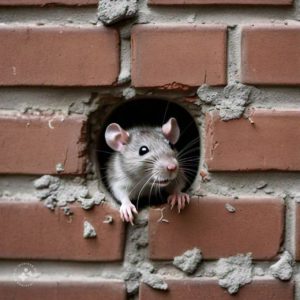Sometimes we get the question ‘why do we need to get rid of pests?’
Well – other than their simple annoyance and their ability to cause costly damage – they also have the ability to affect our health.
Pests can cause a number of allergies and respiratory problems, and they can spread diseases.
Cockroaches can spread disease and are a known cause of asthma. Flea bites can cause allergic reactions. Flies carry bacteria, viruses and several diseases. Mosquito bites can cause infections, allergies and can spread deadly viruses. Rodents and ticks carry and spread diseases, and wasps/ bees can cause itching, swelling and allergies as well.
The most common health threats that we, as South Africans, need to be aware of are:
- Mosquitoes and malaria. The Anopheles mosquito spreads malaria through its saliva when biting someone. The mosquito uses its saliva to prevent the blood in the wound from clotting and it is this saliva that is the pathway for viruses or parasites from the mosquito to the victim. Depending on who or what the mosquito feeds on, viruses and diseases can jump from human to human, animal to animal and even from animal to human. In this way, mosquitoes are the world’s deadliest animal, causing approximately 725 000 human deaths every year.
- Rodents and Leptospirosis or Weil’s disease. Rodents have lived on the planet for at least 56 million years, whilst humans have been here for a much shorter period. The consequences of this short overlap of time have been profound. In the beginning, rodents saw humans as another predator to avoid, however after some time they realized that humans are a reliable source of shelter and food. This sharing environment causes food contamination and spread of disease. Water supplies contaminated by rat urine can transmit a disease known as Leptospirosis or Weil’s disease to humans and pets. The condition is characterized by fever and jaundice, and if left untreated can sometimes lead to organ failure or death.
- Cockroaches and salmonella or gastroenteritis. There are 4600 different cockroach species worldwide, but only 30 of these are associated with human habitats, and only 4 species are considered pests. Although cockroaches are not the most important cause of disease, they do play a role in spreading disease and are proven carriers of organisms that cause disease. Cockroaches feed on decaying refuse and faecal matter and, as such, spread infections such as salmonella and gastroenteritis. Symptoms of these infections are similar to food poisoning.
- Flies and Salmonellosis. Flies are abundant across the globe and are often associated with human activity. They thrive in warmer climates and any area suitable for breeding. Typical fly breeding sites are garage and garbage-handling facilities. Flies can serve as vectors of disease as a consequence of their habit of flying between waste areas, animal and human faeces to food. Diseases are transmitted from this filthy matter to our food by the fly’s vomit drops, in their excrement or through organisms stuck to their feet. Salmonella bacteria, which can result in typhoid fever, are caused by drinking water or eating food that has been contaminated by flies.
To reduce the risk of having health related issues from pests, here are a few steps that you can follow:
- Keep all food items in sealed containers;
- Clean food appliances, crockery, cutlery etc. after eating. You want to leave as little food residues around as possible;
- Declutter your house or storage room or newspapers, magazines or cardboard that could be used as a perfect breeding spot for pests
- Fix any leaking faucets and remove any standing water (i.e. any containers that can accumulate water in a rain event);
- Get your handyman pants on and fill in any cracks and crevices around your house that can be used as entry points for pests; and lastly
- Do not leave garbage or pet droppings outside.





